Challenge’s handmade open tubular gravel tires have shared a number of traits over the past few years. The casings are soft and supple. They roll quickly. The natural rubber compound is surprisingly grippy.
But that suppleness has sometimes come at the cost of durability and puncture protection. And by god, they’ve often been an absolute nightmare to install.
With the new Getaway XP model, however, Challenge seems to have addressed all of that. Some other issues remain, but by and large, these are some awfully nice tires in the right conditions.
Xtra Protection
The Getaway tread design isn’t new. First launched about two years ago, it features tightly spaced center knobs to reduce rolling resistance, an array of small and less densely packed transition blocks for a more natural-feeling initial turn-in, and relatively meaty shoulder blocks that promise secure cornering on loose ground.
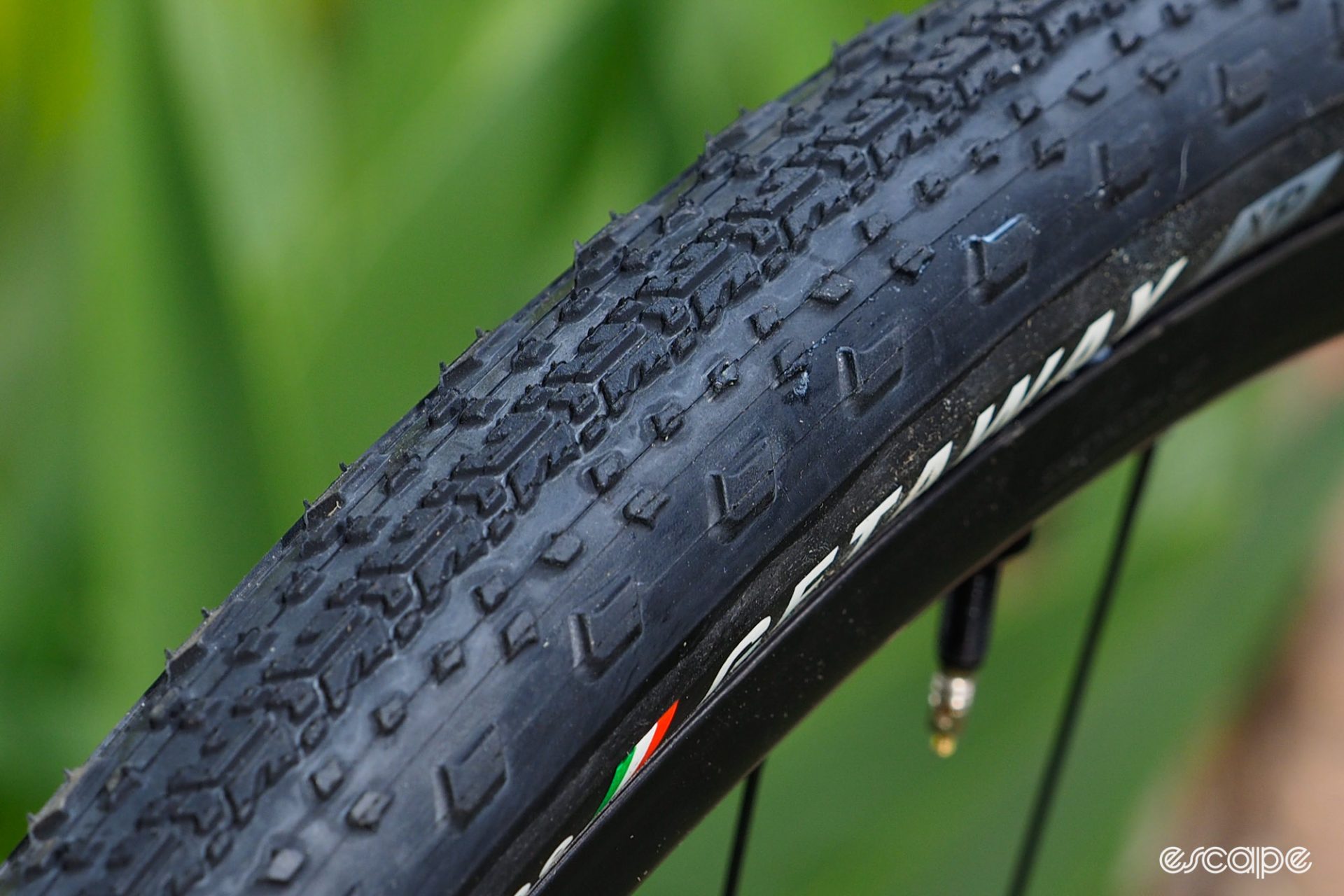
Unlike some other high-end tires, the Getaway uses just a single rubber compound throughout the tread cap. However, Challenge uses natural instead of the more common synthetic blends,, which supposedly offers better grip and longer wear characteristics – a good thing considering the height of the center and transition knobs is unusually low (the shoulder knobs are a bit taller).
The Getaway and the newer Getaway XP share the same basic “SuperPoly” casing construction, using a 260 TPI (threads per inch) polyester fabric that the company claims is both suppler and stronger than the more common nylon materials, while also being more durable than cotton. But while the standard Getaway makes do with just an additional layer of protection on the sidewalls – something Challenge calls Corazza Armor Silver – the Getaway XP adds another layer of “tightly woven material” that runs from bead-to-bead. Dubbed Corazza Armor Gold (naturally), Challenge says this construction provides the added puncture and cut resistance required for “more aggressive conditions”, and “without compromising comfort and handling.”

There’s also a layer of material around the bead to guard against long-term chafing when running the Getaway XP on carbon rims (which can be more abrasive than aluminum ones).
Perhaps best of all, though, are the updates to the bead construction that make the Getaway XP much easier to install than before.

Challenge is offering the Getaway XP in 700×40 or 700×45 mm sizes, exclusively in tubeless-ready (and hookless-compatible) construction. Claimed weight for the smaller size is 550 g, and retail price is US$95. The Getaway XP is a US-exclusive model for the time being; European introduction is slated for later this month (with pricing to be announced then).
The setup
First things first: Challenge isn’t lying when it says the Getaway XP is easier to install. It’s still trickier to mount than a vulcanized clincher given the handmade casing’s stubborn tendency to lay flat, but you no longer need superhuman thumbs (and a lot of cursing) to get these on various rims. It helps to utilize Challenge’s suggested method, where you first lay the entire center of the casing over the center of the rim, and then coax each bead on from the outside in. It’s still a bit of a tougher process than average, but it’s nevertheless possible to get these installed without tire levers if you have good technique – something I could never say about Challenge tires in the past.
Initial inflation and seating unfortunately isn’t quite as trouble-free, though. That strip of material that protects the bead from rim abrasion has a rough finish that’s stubborn to form a seal with the rim (even with sealant already installed) – and it continues to weep a little until all of that roughness is filled in. Conventional floor pumps (even high-volume ones) are hopeless here, but a decent compressor gets the job done without too much trouble. It was also no issue with a portable canister like a Milkit Booster or Airshot.
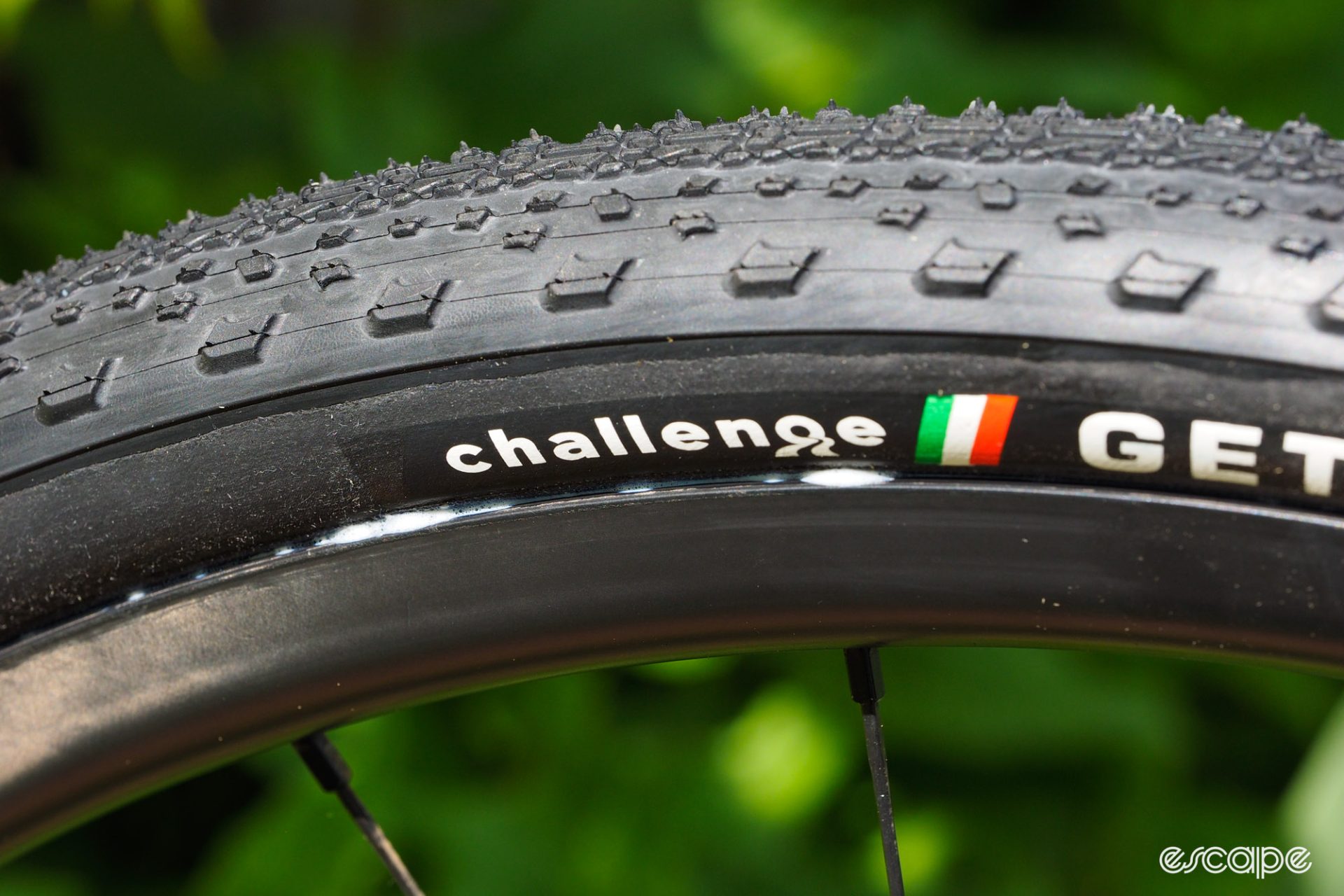
Bead roughness aside, the Getaway XP casing itself is more apt to form an airtight seal than previous Challenge tubeless-ready tires. Tubeless-ready open tubulars like this will often require more time and more sealant to hold air since the casing isn’t already infused with rubber like with a vulcanized clincher, but in the case of the Getaway XP, that additional bead-to-bead layer also seems to make the casing less permeable. An initial 50 mL dose of sealant was all it took, and measured width for my “40 mm” samples was a hair over 41 mm when mounted to a 25 mm-wide (internal width) rim.
The real fun begins after you’re past those initial minor hiccups, because the Getaway XP is an awfully nice tire to ride.
Getting away on the Getaway XP
I’ve ridden a variety of Challenge tires over the years built with similar SuperPoly casings so I’m well familiar with how they feel. In short, Challenge’s claim that all that additional armoring comes “without compromising comfort and handling” doesn’t quite hold up; the more heavily reinforced Getaway XP just isn’t as supple as unreinforced models. That said, it’s not as big an impact as I expected, and the Getaway XP nevertheless manages to feel more elastic and lively than just about any vulcanized gravel tire out there – perhaps just a hair better than a particularly supple example like the Schwalbe G-One RS or Continental Terra Speed.
Ride quality is impressively soft and cushy as a result, the rolling resistance is noticeable low, and you can even get away (no pun intended) with running slightly higher pressures than usual without sacrificing traction since the flexible casing is so willing to mold itself to uneven surfaces. It just feels really good and lively – more like a high-volume, high-quality road tire than a usual gravel one.
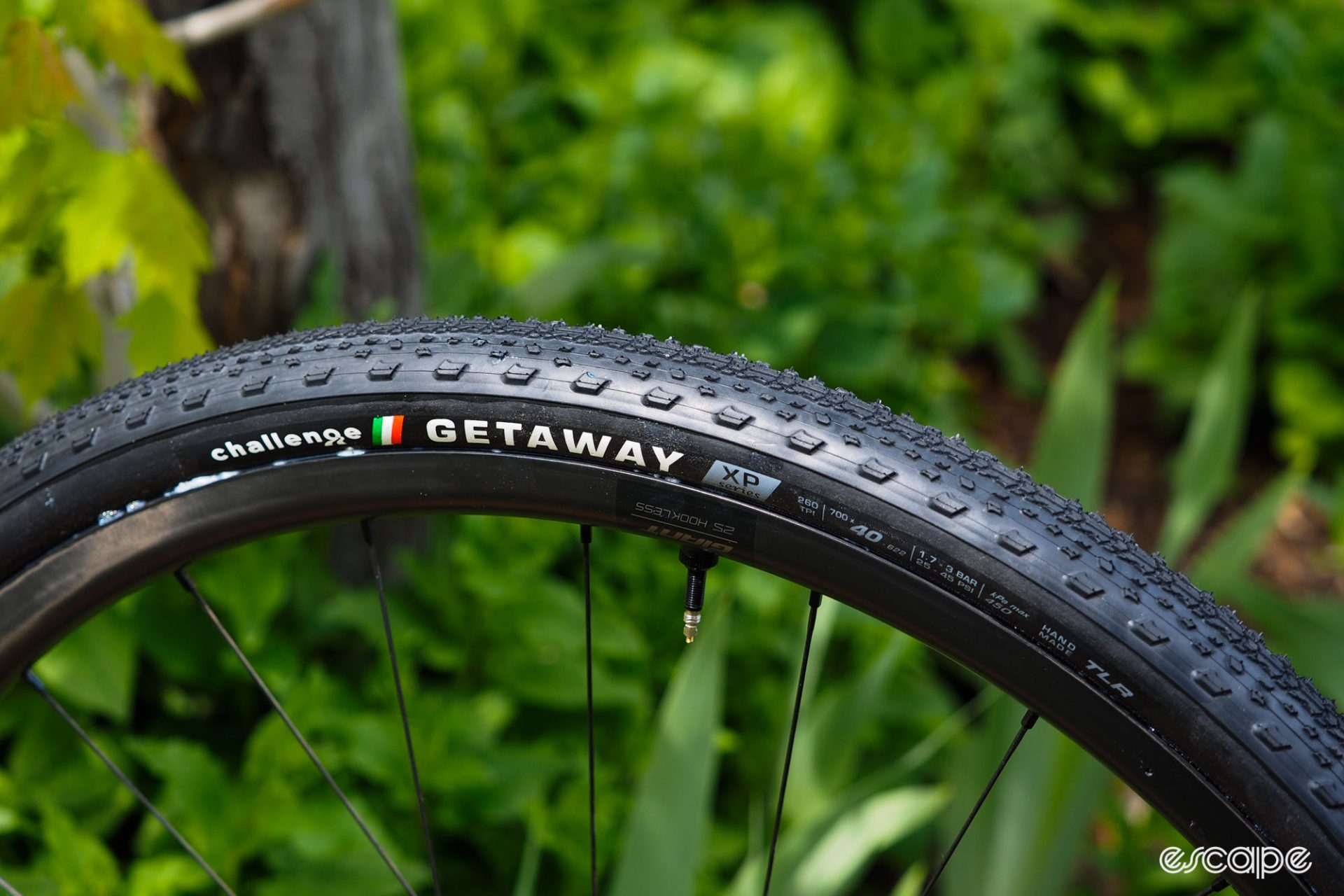
Speaking of traction, it’s surprisingly good given that low knob height. That natural rubber compound grips tenaciously on hardpacked dirt, and there’s less knob squirm than more aggressively treaded tires. That characteristic is especially noticeable on tarmac, where the tire’s rounded profile makes for a fluid transition from edge to edge.
The Getaway XP was also better than I expected on loose surfaces. I usually prefer a more pronounced shoulder to lean on in those conditions, but the Getaway XP was nowhere near as slide-y or sketchy as I’d expected given the appearances. Traction in muddy conditions was as you’d expect, however, with middling grip at best given that low-profile tread. Good rubber only goes so far.
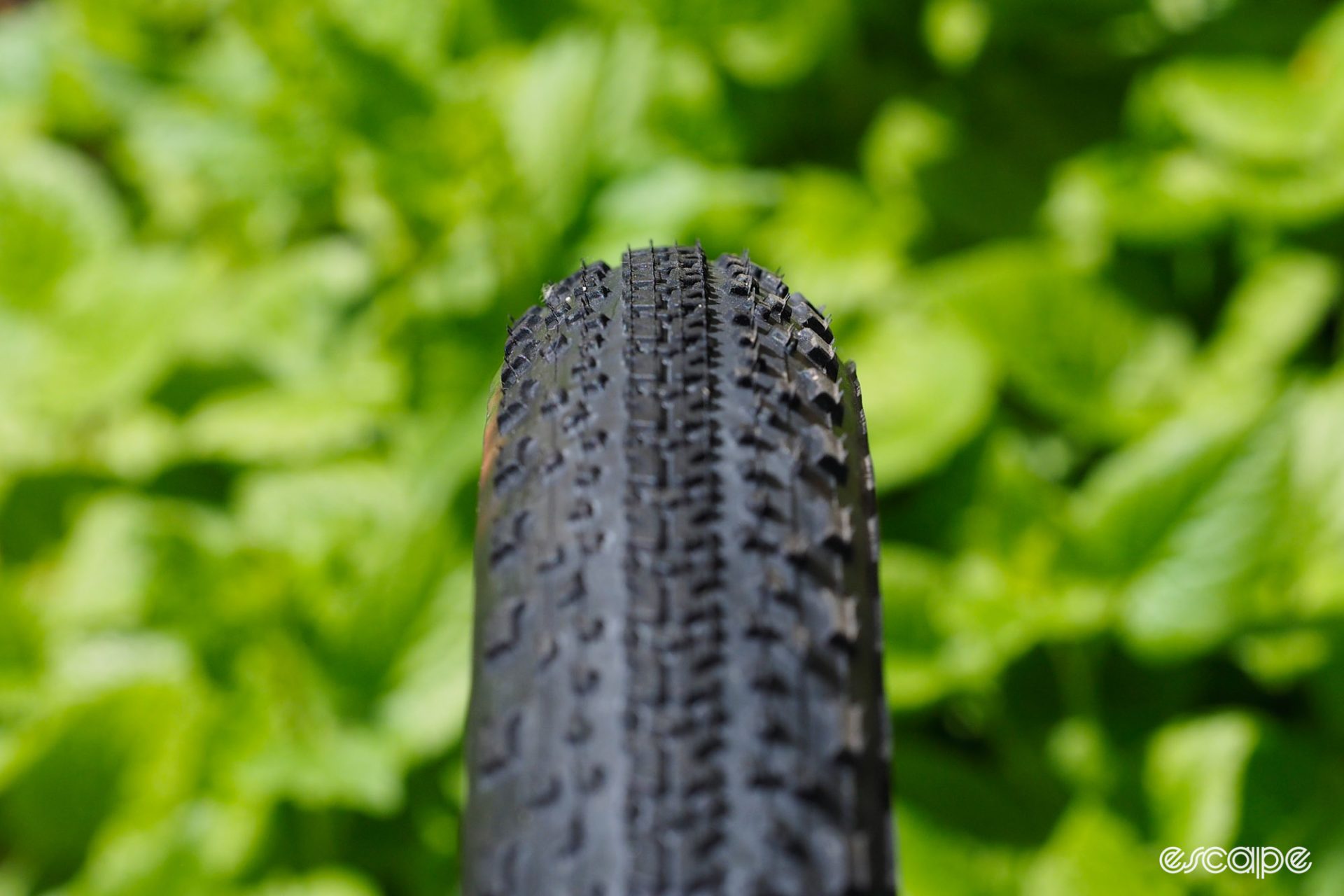
At least on the loose-over-hardpack, hardpacked, and moderately rocky conditions that typify my local “gravel” routes, the Getaway XP quickly became a favorite. It’s fast. It feels great. It’s grippy.
Hard to complain about any of that from a performance perspective.
Evaluating the Getaway XP’s supposedly enhanced puncture protection was unfortunately a little tougher to do. While I didn’t get any flats during my several-week test period over a wide range of terrain and ride types, that’s hardly a scientific test – and even if it was, I’m still a sample size of one. That said, the reinforced casing is obviously thicker under the tread cap than what Challenge uses on the standard Getaway, which should be at least somewhat encouraging if you regularly find yourself rolling across sharper rocks. Regardless, there seems to be something to Challenge’s durability claims for that natural rubber compound; so far, my test tires look like they’ve barely been ridden.
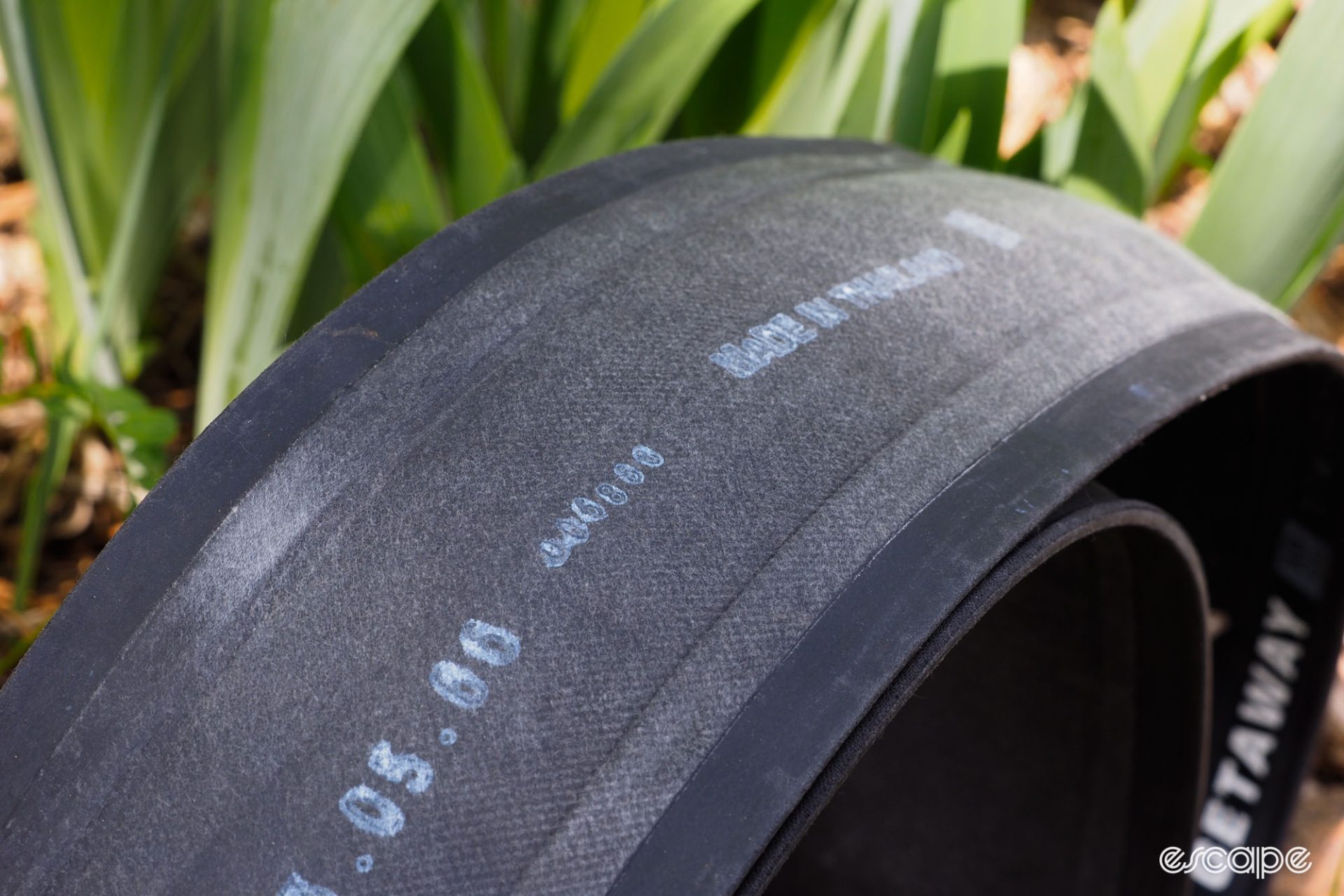
Unfortunately, that surprisingly slow wear also means there’s a good chance you’ll be staring at an uneven tread for longer than you might like. Handmade tires sound romantic and all, but the harsh reality is it also introduces a greater chance for human error. While the cap on one of my test tires was perfectly straight and centered, the tread on the other tire had a slight, but noticeable, wiggle (and, of course, I mounted that tire up front). The edges of the tread cap on one tire weren’t perfectly symmetrical, either. Neither trait detracted from the tires’ performance, but it was annoying nonetheless, particularly given how expensive these things are.
There was more variation in actual tire weight than I typically see in a vulcanized tire, too. Both of my samples came in lighter than claimed, but at 539 g for one and 504 g for the other, that makes me wonder how that variability might affect something long-term. Was there less glue attaching the tread cap on that one? Maybe a bit less sidewall protection? That material was missing from somewhere, but the question is whether whatever was missing matters. Your guess is as good as mine.
Whether you can live with that combination of inconsistency and premium pricing is a question you’ll have to answer yourself. But from a pure performance standpoint – and if your local conditions suit the design – there’s an awful lot to like here, and until another set of test tires land in the queue, I’ll be looking to run these things down to the cords.
More information can be found at www.challengetires.com.
What did you think of this story?

